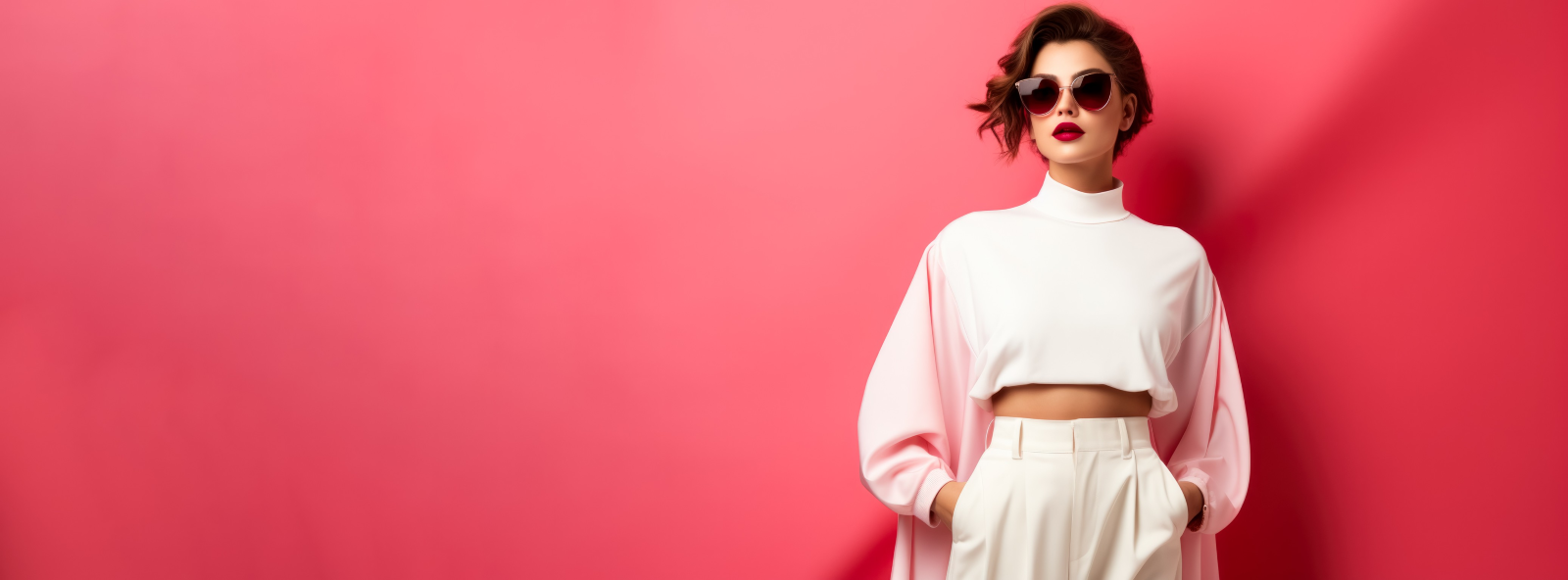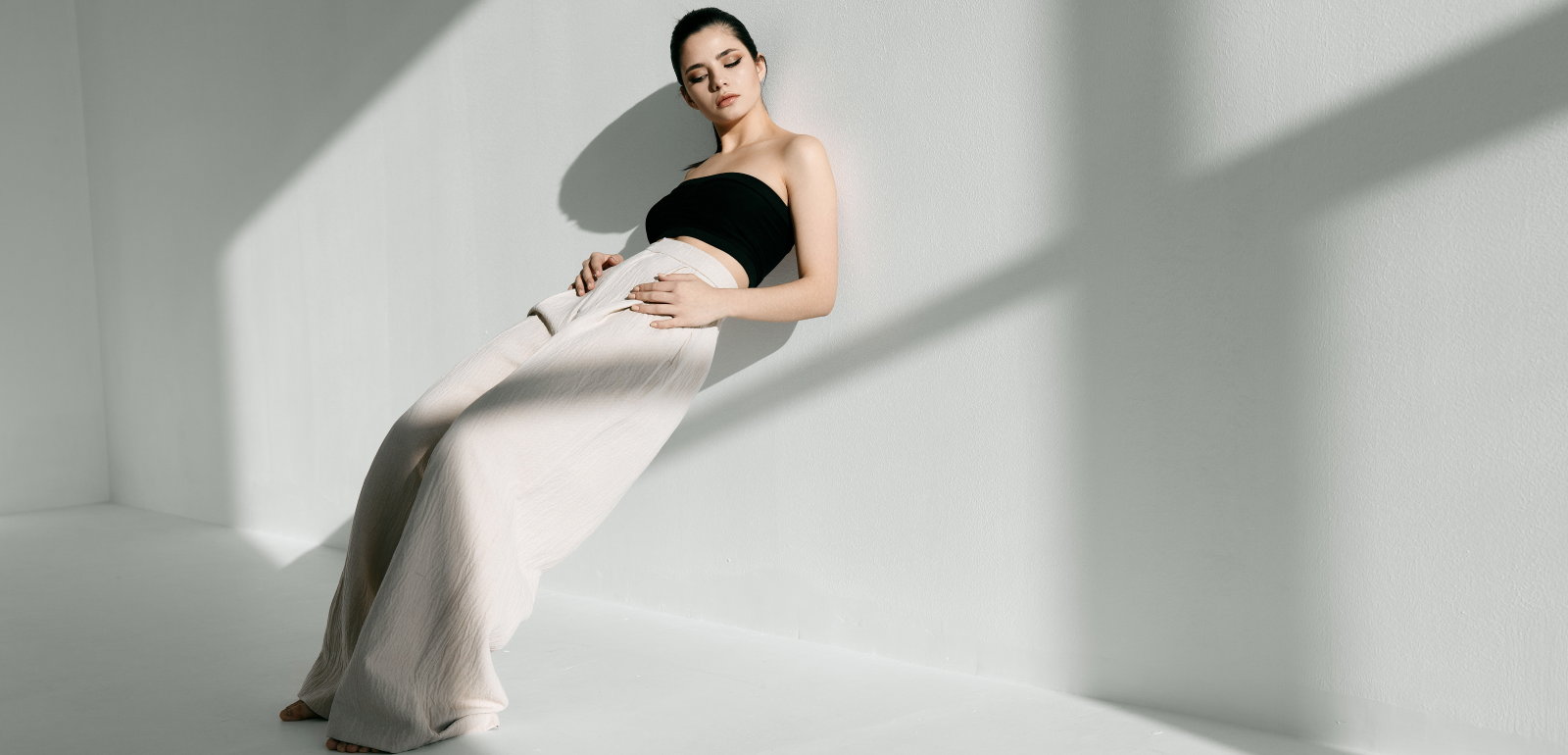From Function to Fantasy: Fashion as a Living Art Form
Fashion began as necessity — a basic human need to cover the body and stay warm. But like all things touched by creativity, it evolved. What started as protection became expression. Over time, fashion branched out into a living, breathing system of style, encompassing not only clothing but jewelry, shoes, lingerie, accessories, ties, belts, and bags. Today, it’s impossible to separate fashion from the wider landscape of art, identity, and imagination.
It doesn’t stop at the fabric. Fashion transforms the person into a walking, living canvas. Hair styling, makeup, skincare, and fragrance all serve to complete the composition. The final look is not just dressed — it’s curated. It’s not about hiding; it’s about revealing the self, piece by piece, layer by layer.
In this sense, fashion is the most accessible and transformative form of art. Unlike sculpture or painting that stays in one place, fashion moves with us, lives on our skin, and tells our story every time we step outside. The phrase “you are what you wear” is more than a slogan — it’s a mirror of reality.
Reality and Fantasy: The Dual Lives of Fashion
Most of us buy clothes for real life. We shop from retail outlets and brands that offer mass-produced collections suited to everyday needs — comfortable trousers, fitted shirts, breathable fabrics, and shoes that don’t destroy our feet. These items balance practicality with personality, allowing us to dress in a way that speaks softly but clearly about who we are.
We dress for function — job interviews, weddings, client meetings, or Sunday brunch. In this version of fashion, we live by convention. We use clothing to meet social expectations, express subtle individuality, and navigate the world.
But sometimes, something else happens.
You pick up a fashion magazine. Or scroll through a runway show online. And suddenly, you’re pulled into a different dimension. The pages or screens don’t show reality — they offer a dream. A carefully staged illusion. Every pose is calculated, each accessory perfectly placed. Fabrics drape in ways that defy gravity. Models become muses. Clothes stop being wearable and become visionary.
This is where fashion stops being about dressing the body — and becomes about dressing the soul.
Fashion: The Show Must Go On
While we go to museums to view art, fashion gives us the show. It invites us not to look at a frame on a wall but to enter a world where movement, color, sound, and attitude collide. The runway becomes a stage, the designer a director, the model a performer. There are no paintbrushes — only fabric, light, and vision.
Just as the world of art has its masters, so does fashion. To Michelangelo, there is Chanel. To Dalí, there is Jean-Paul Gaultier. These are not mere designers; they are visionaries who bend reality to suit their expression. They create not just clothes, but narratives — worlds where the rules of dressing are rewritten, reimagined, and often undone.
The music that plays behind the models isn’t just background noise — it sets the mood, guiding us through the designer’s inner world. The shapes of the textiles, the way they move, the way they catch light — it all works together as a kind of choreography.
In this space, fashion becomes sculpture. Fashion becomes theater. Fashion becomes poetry written in silk, leather, lace, and light.
Fashion Is Art — Worn, Lived, and Felt
Fashion doesn’t need validation from galleries. It doesn’t beg for legitimacy. It has already claimed its place in culture, not just as an industry but as an art form that breathes, constantly evolving, reinterpreting, and reflecting who we are and what we dream of becoming.
It is both real and imaginary. Practical and performative. Personal and universal.
Because the truth is, we don’t just wear fashion. Fashion wears us.
An Uncomfortable Fit of Fashion
Fashion is the manifestation of who you are — and often, who you dream of becoming. It’s more than fabric and thread. It’s visual language. It’s signal and silence. It’s comfort and discomfort all at once.
This ability to reflect identity gives fashion enormous power. And as with all forms of power, it comes with complexity. Fashion can uplift or deceive, liberate or conform. Fashion is status. Fashion is self-expression. Fashion is truth. Fashion is illusion. Sound contradictory? That’s because it is.
Let’s take a closer look.
Fashion as Status
What you wear says something about where you stand. Clothing is a subtle, and sometimes not-so-subtle, indicator of class, wealth, or influence.
Why would someone spend thousands on a pair of sneakers? Or pay the price of rent for a handbag or a jacket? It’s not just about material — it’s about meaning. A brand logo becomes a badge. A price tag becomes a whisper of exclusivity. Even if functionally identical, the luxury version speaks louder in certain circles.
But what happens when fashion becomes a performance of value rather than an expression of self? When the price is worn more loudly than the personality? Fashion, then, becomes a costume — one you may not even realise you’ve agreed to wear.
Fashion as Expression
At its most honest, fashion is pure personal language. It’s the colour you choose because it makes you feel alive. The shape that flatters your confidence. The boots that remind you who you were — or who you’re becoming.
Casual. Clean. Colourful. Vintage. Bold. Sharp. Striking. These aren’t just styles — they’re moods, moods you share without saying a word. What you wear tells the world something about you. Sometimes, it’s truth. Other times, it’s aspiration. Occasionally, it’s camouflage.
And that’s okay.
We all choose how we show up. Some days, we dress to reflect who we are. Other days, we dress for who we wish we were — stronger, freer, braver. Fashion becomes a mirror that lies just enough to give you hope.
Fashion as Transformation
Each stage of life shapes us. And with that shape, fashion shifts too.
In childhood, you wear what you’re given. In youth, you experiment. In adulthood, you curate. Over time, your wardrobe becomes a record — not just of trends, but of transitions. The clothes you once loved no longer fit, and the ones you dismissed begin to make sense.
Is this not the essence of Escrita Com Luz — the art of expressing inner transformation through outward form?
Fashion evolves with you, just as you evolve with it. Certain garments exist not to be worn, but to be understood — like relics of wisdom. Like enlightenment. Ever present, never fully attained.
And Now You
You open your closet. You pick a shirt. A jacket. A pair of shoes. You dress yourself for the world you’re about to step into. Maybe you did it in a hurry. Maybe you gave it careful thought. But there’s a message in it all the same.
Take a second. Look in the mirror. Really look. Ask yourself — is this me?
Are you wearing comfort or control? Fear or freedom? Are you dressing for the world, or for the soul beneath the surface?
Maybe that tension — between who you are and who you want to be — is exactly the point. Fashion, like life, rarely fits perfectly. But in its folds, textures, and colours, it invites you to try again. To reshape. To reimagine.
To dress not just the body — but the light inside it.
Fashion Is Escrita Com Luz
The question of how fashion can be Escrita Com Luz — a form of art that expresses the inner light — isn’t difficult to answer.
If fashion inspires, if it transforms, if it allows you to express who you are or who you’re becoming — then how can it not be a form of light-writing?
We often think of fashion as surface-level. But what we wear doesn’t just shield us from the elements. It holds memory. Identity. Emotion. When you choose your clothes, you’re not just picking out fabrics — you’re participating in self-expression, whether consciously or not.
The Mirror That Reflects the Soul
To know who you are is one of the most challenging, intimate, and personal questions you’ll ever face. No one else can answer it for you. But how do you begin to ask that question seriously?
You start by observing the choices you’ve made — large and small. The people you keep around you. The places you’ve gone. The passions you follow. And yes, even the clothes you choose to wear each day.
Because what you wear right now wasn’t random. It’s a decision. Maybe subtle. Maybe loud. But it came from somewhere inside you — from what you believe, how you feel, what you value, or what you dream of.
Fashion becomes a breadcrumb trail back to self-awareness. Every button, every hem, every color speaks. Are you listening?
More Than Fabric — A Personal Revelation
Some garments make us feel powerful. Some make us feel safe. Some reveal parts of ourselves we don’t always share. Fashion does more than decorate — it reveals, and sometimes, it even heals.
This is why fashion is not just commerce or costume. It’s reflection. It’s projection. It’s ritual. It’s a soft form of autobiography.
And this brings us to the real question — not how can fashion be Escrita Com Luz — but rather:
How can fashion not be?

Can Fashion Be Escrita
Can fashion really be considered a form of art like painting or sculpture?
Yes. Fashion, like painting or sculpture, is a medium through which individuals express identity, emotion, culture, and imagination. It involves creativity, storytelling, craftsmanship, and symbolism — all key elements of art. Just as a sculpture reflects the artist’s vision through form, fashion reflects it through silhouette, fabric, and movement. When approached with intention, fashion becomes wearable art — a living expression of Escrita Com Luz.
What makes fashion qualify as Escrita Com Luz?
Escrita Com Luz means “writing with light” — a poetic concept that represents expressing inner truth through outer form. Fashion qualifies when it goes beyond trend-following or utility and becomes a way to share who you are, how you feel, or what you believe. Whether it’s a bold statement piece or a quietly meaningful outfit, fashion can communicate light — internal reflection made visible.
Isn’t fashion too commercial or superficial to be spiritual?
Fashion has a commercial side, but that doesn’t strip it of depth. Like music or film, fashion lives between commerce and creativity. Even within consumer fashion, personal choices can carry deep significance. Clothing becomes a form of self-curation. It reflects identity, culture, and change — and when worn with awareness, it can be a spiritual practice of showing up in the world with honesty and intention.
How does fashion help people explore or express who they are?
Fashion allows people to experiment with identity. Through different styles, colors, and combinations, individuals can reveal parts of themselves or step into new aspects they’re exploring. It can be grounding, empowering, or aspirational. Like any art form, it gives shape to feeling — whether confidence, rebellion, softness, strength, or transformation.
Can everyday fashion still be Escrita Com Luz?
Absolutely. You don’t need to walk a runway to express your light through fashion. Everyday outfits — chosen with care, worn with purpose — can carry meaning. A favorite sweater that reminds you of home. A color that lifts your mood. A jacket that makes you feel brave. These are all ways we use fashion to connect with our inner selves and project that truth into the world. That, at its core, is Escrita Com Luz.


You must be logged in to post a comment.